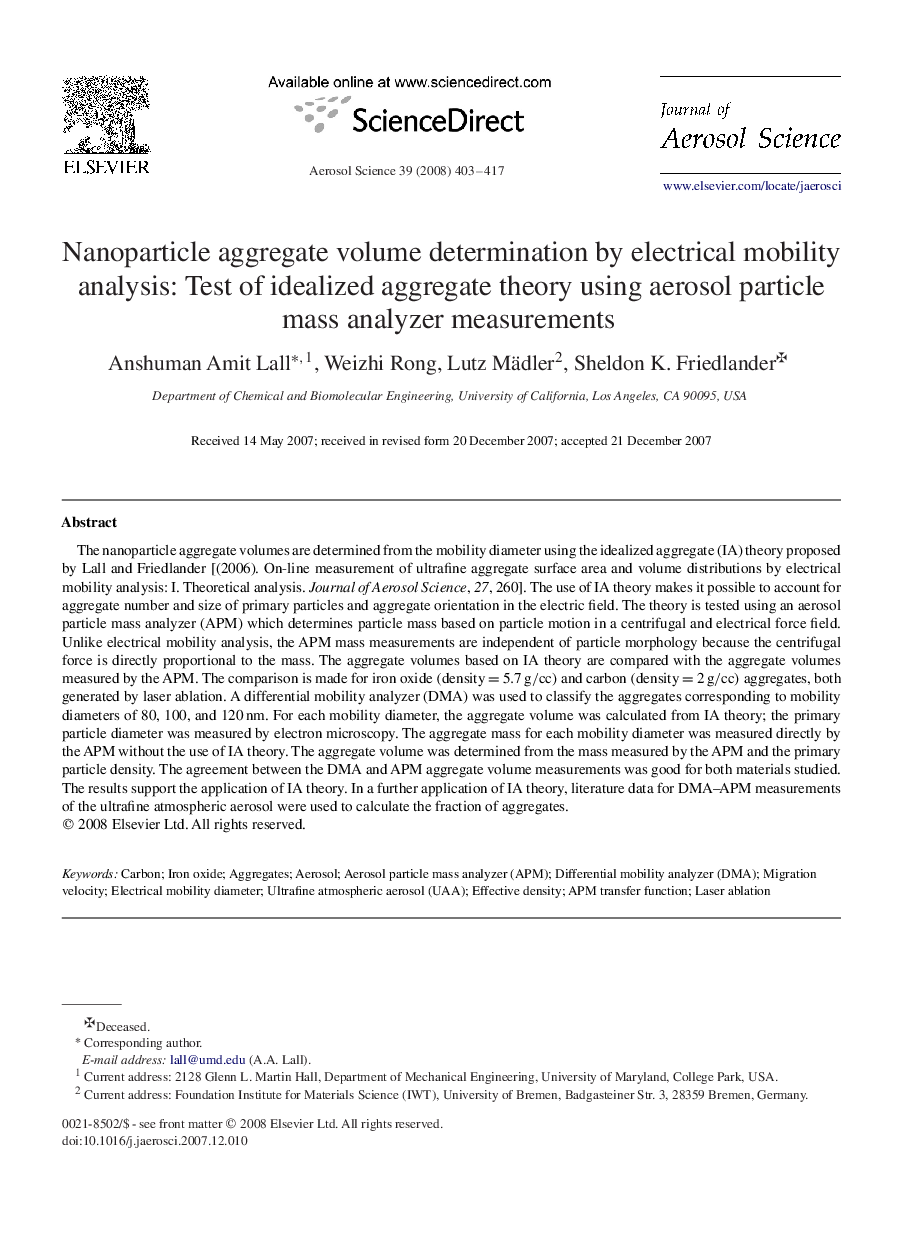| Article ID | Journal | Published Year | Pages | File Type |
|---|---|---|---|---|
| 4453247 | Journal of Aerosol Science | 2008 | 15 Pages |
The nanoparticle aggregate volumes are determined from the mobility diameter using the idealized aggregate (IA) theory proposed by Lall and Friedlander [(2006). On-line measurement of ultrafine aggregate surface area and volume distributions by electrical mobility analysis: I. Theoretical analysis. Journal of Aerosol Science, 27 , 260]. The use of IA theory makes it possible to account for aggregate number and size of primary particles and aggregate orientation in the electric field. The theory is tested using an aerosol particle mass analyzer (APM) which determines particle mass based on particle motion in a centrifugal and electrical force field. Unlike electrical mobility analysis, the APM mass measurements are independent of particle morphology because the centrifugal force is directly proportional to the mass. The aggregate volumes based on IA theory are compared with the aggregate volumes measured by the APM. The comparison is made for iron oxide (density=5.7g/cc) and carbon (density=2g/cc) aggregates, both generated by laser ablation. A differential mobility analyzer (DMA) was used to classify the aggregates corresponding to mobility diameters of 80, 100, and 120 nm. For each mobility diameter, the aggregate volume was calculated from IA theory; the primary particle diameter was measured by electron microscopy. The aggregate mass for each mobility diameter was measured directly by the APM without the use of IA theory. The aggregate volume was determined from the mass measured by the APM and the primary particle density. The agreement between the DMA and APM aggregate volume measurements was good for both materials studied. The results support the application of IA theory. In a further application of IA theory, literature data for DMA–APM measurements of the ultrafine atmospheric aerosol were used to calculate the fraction of aggregates.
